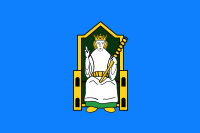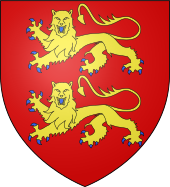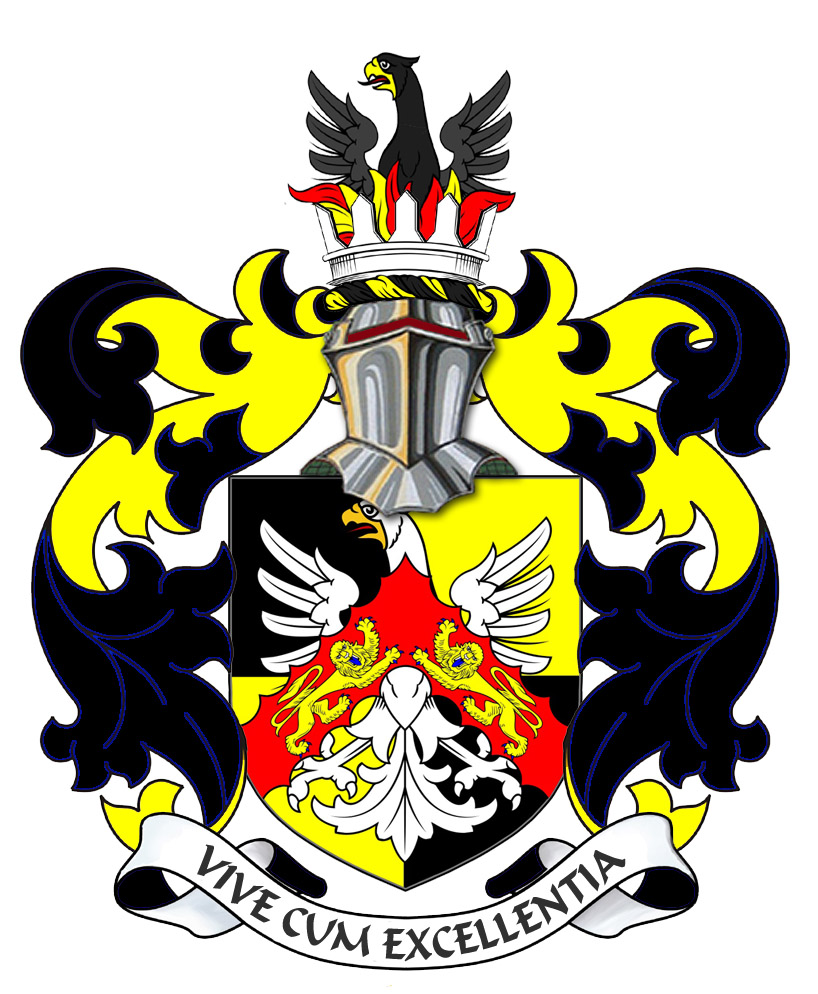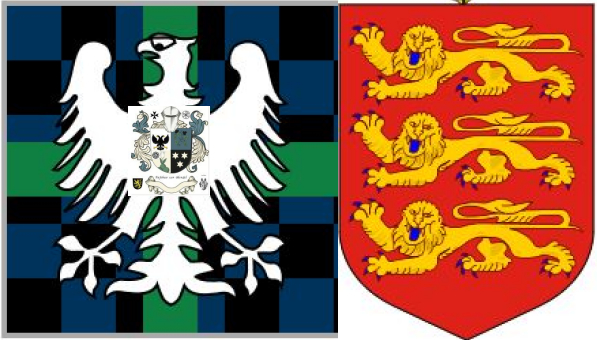Baron Longford Baron Annaly - Feudal Principality Seignory




THE ANCIENT VIKING FIEFDOM OF THE NORSE ISLANDS OF THE CHANNEL " THE FIEF BLONDEL " Est. 1179 Greetings from the Ancient Lords, Dames and Seigneurs of Private Fief Blondel Est. 1179 - "Le Seigneurs de la Fief Thomas Blondel"One of the Last Private Fiefs Recognized in Her Majesty's Crown DependenciesFriherre av Fief Blondel, Kanaløyer Est. 1179History of the Viking Norman Seigneur & Fiefdoms911AD - The Norse Channel Islands were conquered by the Vikings before 911AD. As a concession to the invaders, Fiefs of the Channel Islands begin with the Grants by King Charles the Simple. In 912, Charles the Simple, King of France, ceded to Rollo, the great Norwegian Chieftan, the province of Neustria, now called Normandy, and Rollo became the first duke of that province. On his baptism and marriage with Gisele, daughter of Charles, he also received Brittany, for which Juhael Berengier, Earl of Rennes, did him homage.
911AD. The Great Viking Chief Rollo Göngu-Hrólfr or Gaange
Rolf.
1020AD - The Fiefdom of Thomas Blondel came about through the
medieval fragmentation of Fief Au Canelly and consequently, of the initial half of Guernésiais or Guernsey given by
Duke Richard II in 1020 to Neel, Vicomte of the Cotentin. AD 1179 - We find Legal Reference of Lord Seigneur of Thomas Blondel, a noble fief, in a charter of 1179AD when he is witnessing a grant to St. Michael's Mount. He is Robert Malmarchie (Thomas Blondel). 1200's AD - The Parish of St. Andrew in which Thomas Blondel lies contained a group of four late 12 century ecclesiastical Fiefs, one held by the Bishop of Countances, the second held by the Abbot of Cormery, Tours, the third held by the Abbot of La Croix St. Lewfroy, Evreux, and the fourth held by the Abbess of Trinity, Caen. The Fief Thomas Blondel derives its name, as we have already observed from the family of Malmarcher or Malmarchy who are recorded in the charters as existing in Guernsey in the 12th Century. Today, The region of The Fief de Thomas Blondel lies in both St Peter-in-the-Wood and Torteval Counties or Parishes of the Island of Guernsey In 1270, on the death of Sir Henry Le Canelly, the Guernsey fief was divided between his daughters. Guilemette, the wife of Henry de Saint Martin obtained a considerable part of the island originating later the fiefs of Janin Besnard, Jean du Gaillard, Guillot Justice and Thomas Blondel. This was confirmed by the tenants and officers of the Fief in letters patent issued by Guernsey's Royal Court under the Bailiwick Seal in 1463. The original noble, Thomas Blondel was a jurat of Guernsey’s Royal Court from 1421-45. The Blondel family has given several jurats to the island. Later the Columbines and Fiotts were the holders of the title. For a time, the rights over the Fief were divided in two. A Record of the Feifdom Deed of the Fief of Thomas Blondel in the parishes of St Peter of the Wood and Torteval, Guernsey, made by Janet Blondel to Thomas de la Court. attested by Jean Bonamy and Jacques Guille, jurats. See University of Leeds Library GRANT of BLONDEL The Noble Fief of Blondel is one of the island's few feudal titles not held by the Queen. The Feudal Lord's of Blondel - Approx. Chronology of FreeLords who Held the Norman Title.
The Chief Pleas of the Seignorial court of Seigneurial court of Fief Thomas Blondel were held annually at the mounting block or steps (perron) of the Church of St. Pierre-du-Bois.
The Fief Blondel is a private fief dating back to 1179 in the Crown Holding Island of Guernsey. A Fief of Fiefdom – is a feudal area of land for which residents once paid fees or rendered services to the Lord Baron or Seigneur in return for the right to use the land in commerce. The Free Fief Blondel is in two parishes or counties of Torteval and St. Peter of the Wood. The Fief sits on the Eastern part of the island and includes areas in the North, Central and South East Sections of the Island including: beach, woods, buildings, common areas, sacred lands, and other commercial buildings and farm land along with potentially including small islands offshore of the fiefs beach and foreshore. Historically, fiefs, small baronnies of land, were granted as a form of over-lordship, giving the Free-Lord or Seigneurs the rights over the people and property on that land under the ancient norman feudal system.
Style of Seigneur - As per the The Feudal Dues
(Guernsey) Law, 1980 Style of Seigneur of a fief etc. Section 4. The foregoing provisions of this Law shall be
without prejudice – Most of the legal rights formerly enjoyed by the Seigneurs of fiefs having been abolished by law in 1966 but international law and custom still pertains to the rights of beaches, airwaves, underground, common areas, foreshore, and other rights such as hunting and fishing. A fief owner does register the title in an act of legal title conveyance with Her Majesty's Receiver General much like the transfer of land rights, mineral rights or water rights and the fief buyer pays special consideration of Treizième & Congé fees to the CROWN for the transfer and rights. The Fief holder can be styled Seigneur (or Dame) du Fief de la ..... Generally speaking, the title is not normally used except in formal settings. A fief, in legal theory, is held directly from the Crown. However, this fief does not owe homage or any other services but does maintain rights to conduct customs and formalities such as creating honorrific Fief Officers and Courts or possibliy representing the Fief in any unclaimed area of law such as foreshore, airwaves, water rights, hunting and fishing rights etc. |
About Longford Pedigree of Longford Annaly Honour of Annaly Longford The Seigneur Lords Paramount Ireland Market & Fair Chief Captain Kings Forces Chief and Captainship of The Annaly Lord Governor of Annaly Prince of Annaly Principality Chief of the Annaly Princes of Longford Feudal Princes of WestMeath Count of the Palatine of Meath A Barony Explained Princes of Annaly Pedigree Sovereign Title Succession Lord of St. Brigit's Longford Abbey Est. 1578 Lord of the Pale Commissioners of the Peace Tenures Abolition Act 1662 - Rights to Sit in Parliament Law of Ireland Seneschal of Meath List of Townlands of Longford Annaly English Pale Kings of Hy Niall Colmanians Court Barons News Irish Kingdoms Lordships of Granard Fishing & Dams Rights Rights of Lords & Barons Datuk Seri Baliwick of Ennerdale Moneylagen Feudal Barons Styles and Dignities Lord Baron Longford Baron de Delvyn Longford Map Lord Baron of Delvin Baron of Temple-Michael Baron of Annaly Kingdom Annaly Lord Conmaicne Baron Annaly Order of Saint Patrick Baron Lerha Granard Baron AbbeyLara Baronies of Longford Princes of Conmhaícne Angaile or Muintir Angaile Baron Lisnanagh or Lissaghanedan Baron Moyashel Moiety of Ardagh Baron Rathline Abbeys of Longford Grants to Delvin Baron Inchcleraun HOLY ISLAND Quaker Island Longoford CO Abbey of All Saints Hereditaments Kingdom of Uí Maine Baron Dungannon Baron Monilagan - Babington Lord Liserdawle Castle Baron Columbkille Kingdom of Breifne or Breny Baron Kilthorne Baron Granarde Count of Killasonna Baron Skryne Baron Cairbre-Gabhra AbbeyShrule Fiefs of the Islands Feudal Westmeath The Island Lords Fief Worship Channel Island History Fief Blondel Fief Blondel Merchandise Events Blondel and King Richard Fief Coin Feudal Guernsey Titles The Feudal System Flag & Arms Castle Site Map Disclaimer Blondel Myth Dictionary Honorable Colonel Mentz Order of St. Columba Valuation of Principality & Barony of Annaly Longford
Feudal Baron of Longford Annaly - Baron Longford Delvin Lord Baron &
Freiherr of Longford Annaly Feudal Barony Principality Count Kingdom of Meath - Feudal Lord of the Fief
Blondel of the Nordic Channel Islands Guernsey Est. 1179 George Mentz
Bio -
George Mentz Noble Title -
George Mentz Ambassador - Order of the Genet
Knighthood Feudalherr - Fief Blondel von der Nordischen
Insel Guernsey Est. 1179 * New York Gazette ®
- Magazine of Wall Street - George
Mentz - George
Mentz - Aspen Commission - Ennerdale - Stoborough - ESG
Commission - Ethnic Lives Matter
- Chartered Financial Manager -
George Mentz
Economist -
George Mentz Ambassador -
George Mentz - George Mentz Celebrity -
George Mentz Speaker - George Mentz Audio Books - George Mentz Courses - George Mentz Celebrity Speaker Wealth
Management -
Counselor George Mentz Esq. - Seigneur Feif Blondel - Lord Baron
Longford Annaly Westmeath
www.BaronLongford.com * www.FiefBlondel.com |




Commissioner George Mentz - George
Mentz Law Professor - George
Mentz Economist
George Mentz News -
George Mentz Illuminati Historian -
George Mentz Net Worth
The Globe and Mail George Mentz
Get Certifications in Finance and Banking to Have Career Growth | AP News